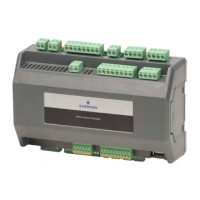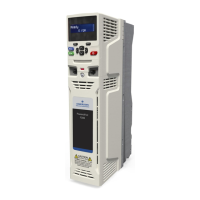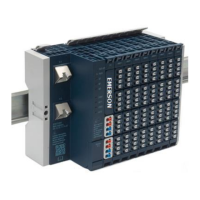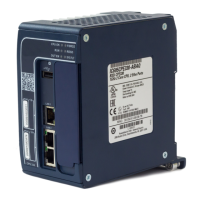PACSystems™ RX3i and RSTi-EP CPU Reference Manual Section 6
GFK-2222AK October 2019
Serial I/O, SNP & RTU Protocols 157
6.2.14.2 Return Data Format for the Read Bytes Function
The return data consists of the number of characters actually read, the number of
characters still available in the input buffer after the read is complete (if any), and the
actual input characters.
6.2.14.3 Operating Notes for Read Bytes
If the input data memory type parameter is specified to be a word memory type, and if an
odd number of bytes is actually received, then the high byte of the last word to be written
with the received data is left unchanged.
As data is received from the serial port it is placed in the internal input buffer. If the buffer
becomes full, then any additional data received from the serial port is discarded and the
Overflow Error bit in the Port Status word (See Read Port Status Function) is set.
6.2.15 Read String Function (4403)
This function causes characters to be read from the specified port until a specified
terminating character is received. The characters are read from the internal input buffer
and placed in the specified input data area.
The function returns both the number of characters retrieved and the number of
unprocessed characters still in the input buffer. If zero characters of input are requested,
only the number of unprocessed characters in the input buffer is returned.
If the terminating character is not in the input buffer, the status of the operation is not
complete until either the terminating character has been received or the time-out
interval expires. In either of those conditions, the port status indicates the reason for
completion of the read operation.
If the time-out interval is set to zero, the COMMREQ remains pending until it has received
the requested string, terminated by the specified end character.
If this COMMREQ fails for any reason, no data is returned to the input data area. Any data
that has not been read from the internal input buffer remains, and it can be retrieved with
a subsequent read request.
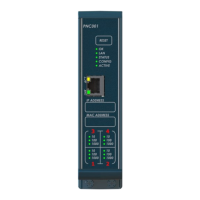
